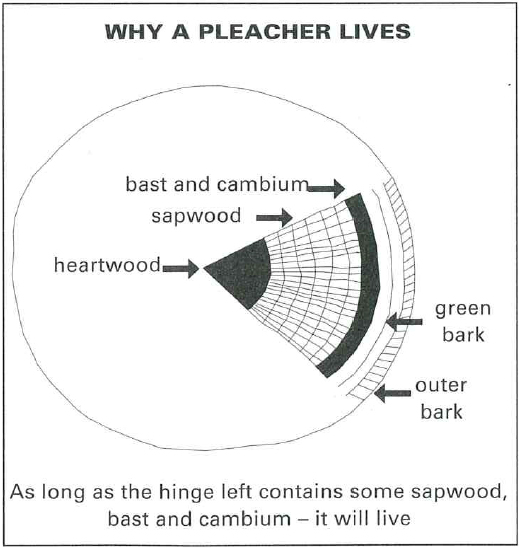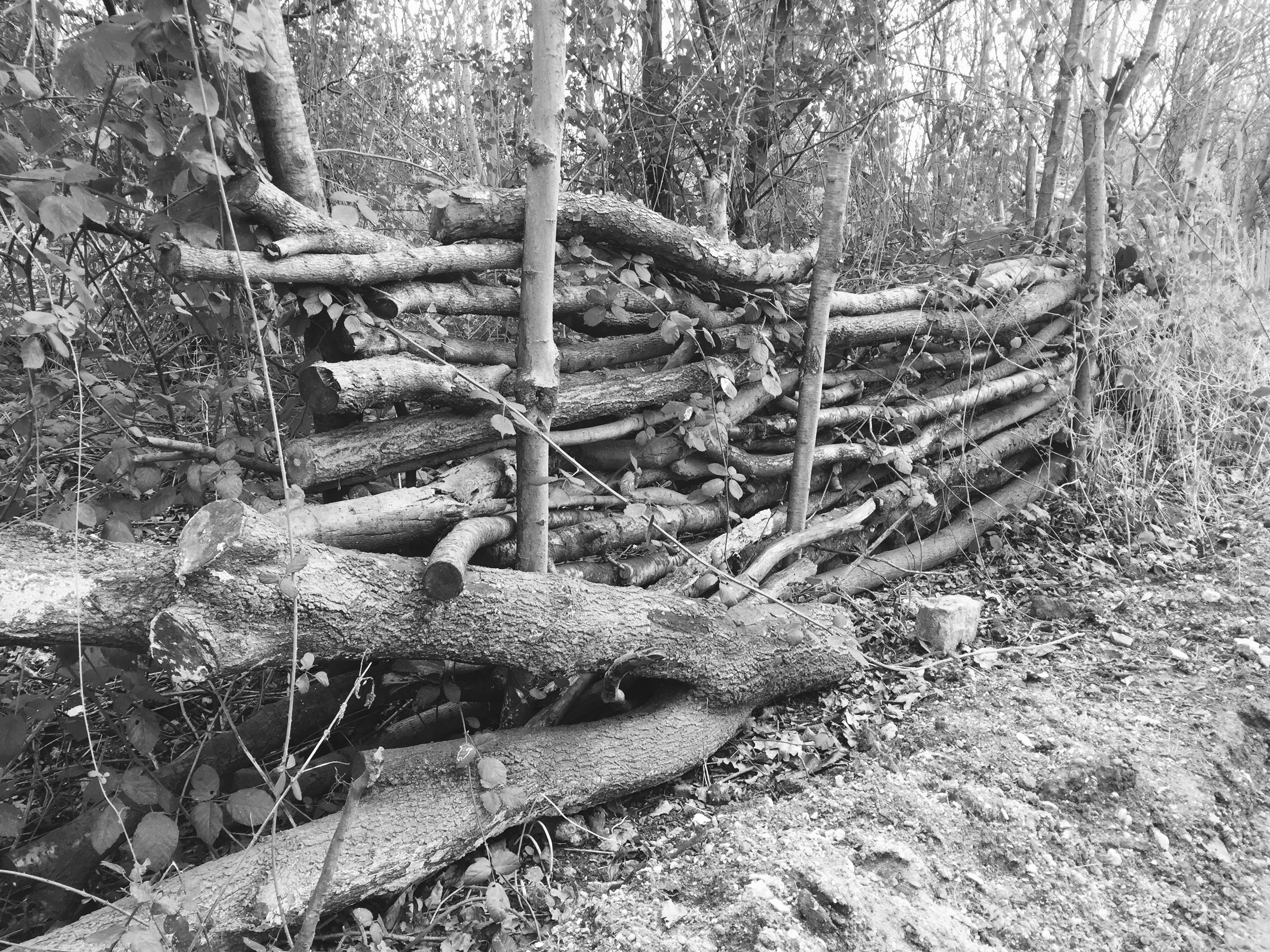 Although the cutting and laying of stems or pleachers to form a living barrier was known to the Romans, early hedge management was probably by coppicing or cutting the hedge to the ground. The most common form of modern hedge management today is an annual cut with a tractor and flail. Laying a hedge by pleaching (cutting part way through the stems to bend and weave them together) allows a detailed and potentially indefinite way of creating a biodiverse boundary, and generates brush and firewood each time the hedge is laid
Although the cutting and laying of stems or pleachers to form a living barrier was known to the Romans, early hedge management was probably by coppicing or cutting the hedge to the ground. The most common form of modern hedge management today is an annual cut with a tractor and flail. Laying a hedge by pleaching (cutting part way through the stems to bend and weave them together) allows a detailed and potentially indefinite way of creating a biodiverse boundary, and generates brush and firewood each time the hedge is laid
 On representation and boundaries
On representation and boundaries- Consider boundaries as a thickness and not as a line.
- Think of an edge as an area for investigating the generation of diversity at the meeting point between different habitats.
- Try imprecision and depth as ways of representing [these interfaces]
Gilles Clément: Third landscape Manifesto p. 59.
Pleacher diagram from 'Why Lay Hedges?', BTCV fact sheet, 2003.
Thick boundary: Log wall, opposite Goblin Wood, February 2017.
Photograph: Ky Lewis